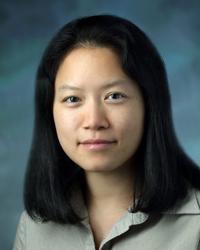Patient Story
Getting Strong Again After COVID-19: Ahmad's Story
Ahmad Ayyad, 40, was in great shape.

A chiseled 215 pounds on a 6’1” frame, 他参加了要求很高的障碍赛跑,他要爬过围墙,从铁丝网下爬过, lugging heavy objects, and traversing monkey bars and rings.
On a typical day, he’d work in his family’s retail furniture business, then box and lift weights, before heading to his Washington, D.C., home. He played basketball several times a week.
And then, COVID-19 almost killed him.
Ayyad was on a ventilator at The Johns Hopkins Hospital 他坚持了25天,减掉了60多磅. His doctors say his physical fitness, 积极的态度和朋友和家人的支持正在帮助他从疾病和长期呼吸的代价中恢复过来.
Discharged on April 22, Ayyad的左臂仍有血块,心脏和肺部也有损伤,这些都是COVID-19的并发症. 但他的体重逐渐增加,并开始跑步和举重.
“他似乎恢复得很好,”桑德拉·扎伊(Sandra Zaeh)说.D., a pulmonary and critical care medicine fellow, 谁在医院治疗Ayyad,并继续作为一个名为PACT的后续小组的一部分照顾他, for Post-Acute COVID Team.
Describing a May 5 video consultation, 她说:“从在重症监护室看到病情最严重的他——插管,这真是太了不起了, 给他注射了深度镇定剂,让他趴着呼吸——回家看他. 他微笑着说,他很高兴能在外面慢跑一会儿,让阳光照在脸上.”
对于研究人员来说,COVID-19大流行仍然太新,无法确定谁最容易生病,以及为什么会生病. However, 许多受影响最严重的患者年龄超过65岁,并有合并症, such as obesity or diabetes.
And then there’s Ayyad. 扎伊说:“他没有理由认为自己会比其他人面临更大的风险。. “但可能有一些因素我们还没有完全了解.”
Every day, I’m getting better and better...I’m slowly getting my weight back. I’m eating a lot; I’m taking walks outside.
Ahmad Ayyad
Flu-Like Symptoms

On March 11, Ayyad, the fourth of nine children and the oldest son, began experiencing flu-like symptoms, including a mild fever. Rest and shorbat adas — a lentil soup made by his sister – didn’t help.
By March 14, 他挣扎着喘不过气来,虚弱得不能自己开车去医院, says his friend Deena Nasr, 乔治华盛顿大学医院的医师助理. 她说服他乘优步去了西布里纪念医院,第二天他就去了.
她说,在那里,他的COVID-19和甲型流感检测均呈阳性. As his breathing worsened, 他被戴上了呼吸机,并于当天被转移到约翰霍普金斯医院.
Ayyad成为该医院的第三名COVID-19患者,也是第一位使用呼吸机的患者 Natalie West, M.D., M.H.S., the pulmonary specialist who admitted him.
韦斯特说,由于有通气管,他无法说话,只能通过写笔记来交流. “我们进行了一次完整的对话,我说话,他写,”她说. “他在那张纸上写的最后一句话是,‘非常感谢你对我的照顾.’ It brought tears to my eyes. He just seemed like a very sweet and kind person.”
That moment of lucidity was short-lived. 在接下来的25天里,阿亚德的体温忽高忽低,他的呼吸靠呼吸机维持. He was heavily sedated and often delirious. He grew agitated and removed his ventilation tube. 当第二次拔掉管子准备气管切开术时, 事实证明,阿亚德的呼吸足够稳定,因此不需要进行手术.
His recovery had begun.
This is not the flu. 人们需要小心,要知道这可能发生在任何人身上.
Ahmad Ayyad
Determined to Get Stronger
几天后,他被转到医院的新冠肺炎病房. 当阿亚德坐着轮椅离开重症监护室时,护士们鼓掌庆祝他的显著康复. “Everyone in the ICU was amazing,” he says. “I really feel for them and appreciate everything they do. I hate that caring for me puts them at risk.”
从重症监护室出来后,阿亚德专注于增加体重和力量. “The day I woke up I was 153 pounds,” he says. “My legs and arms were skinny and my chest was gone. 我简直不敢相信,要走到床边站起来有多难.”
Gigi Liu, M.D., M.Sc., 一位医院医生和定点超声专家,他跟踪了Ayyad在icu后的进展, 描述了一个推荐十大正规网赌平台,他非常积极地想要好起来,以至于他在几天内停止了鼻腔吸氧,在病房里走来走去.
“有一群人一旦使用呼吸机一段时间, it’s hard to come back,” says Liu. “That wasn’t Ayyad. He happened to be a super-duper fit guy before all this. I think that helped him.”
渴望见到他的父母也给予了帮助.
“我进重症监护室的那天,我妈妈给我留了一条语音信息,”Ayyad说. “她说,‘请给我打电话,让我知道你一切都好.“我爸爸说他们不能来看我,她不相信. 她以为他只是想保护她不让她看到昏迷的我.”
阿亚德想出院后搬去和父母住, but Liu urged him to self-isolate for two weeks first.
“他问我之后能不能拥抱和亲吻他们,”刘说. “I know he really wanted to, 但我们对这种疾病的了解还不够,也不知道病毒是否仍在传播, even though he tested negative twice. I saw the tears in his eyes when I said no. That was the one thing I disappointed him on.”
When Ayyad got to his Washington, D.C.回家后,他的父母站在人行道上,站在安全距离外迎接他. They had already filled his refrigerator.
“每一天,我都在变得越来越好,”Ayyad在5月1日说. “I’m slowly getting my weight back. I’m eating a lot; I’m taking walks outside.”
Ayyad说,从COVID-19中恢复比为他最困难的比赛训练更难.
他说:“我每年都会得流感,我病倒两三天,然后就好了。. “This is not the flu. 人们需要小心,要知道这可能发生在任何人身上.”
Learn more about COVID-19 and Johns Hopkins on our coronavirus site.







